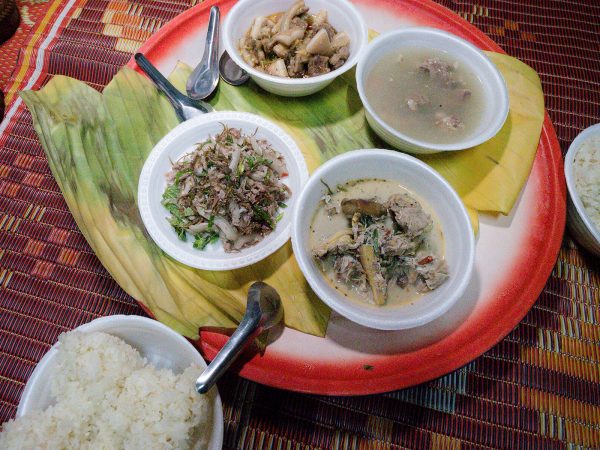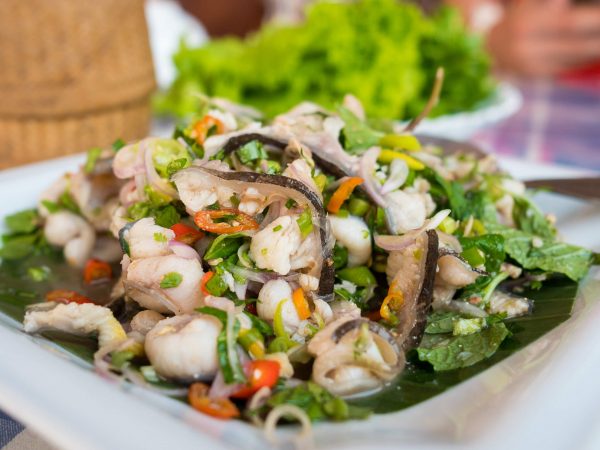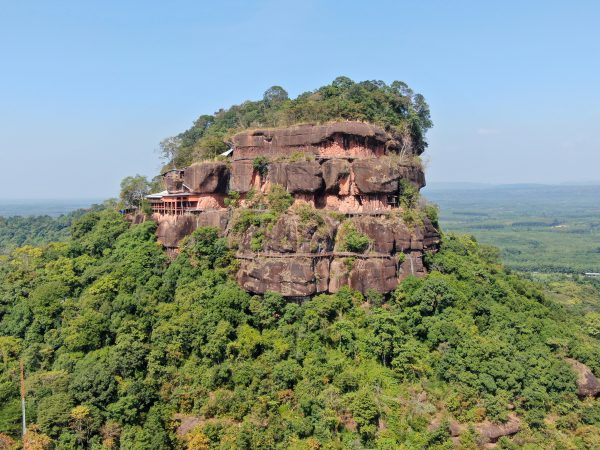
Champasak, Laos is a quaint town, with a few beautiful French colonial buildings and an attitude of relaxation.
The town is positioned directly on the banks of the Mekong River and only 10 km from the UNESCO world heritage temples of Wat Phou (also spelled Vat Phu or Wat Phu).

I left my Guest House right at around 7:30 am by bicycle and arrived at the quiet Wat Phou complex at 8 am. There was only 1 other person there when I arrived (unlike the 30,000 others at Angkor Wat in Cambodia).
The Wat Phou Hindu temple complex is located on the side of a symbolic sacred mountainside called Phu Kao, overlooking an ancient city that was previously built on the Mekong plain below. The complex dates to the 5th and 6th centuries AD, and is dedicated to the Hindu deity of Shiva.
At the top of the temple is a freshwater spring that flows from the rock, one of the reasons the temple was built and stood strong from before the main Angkorian period of Khmer rule.
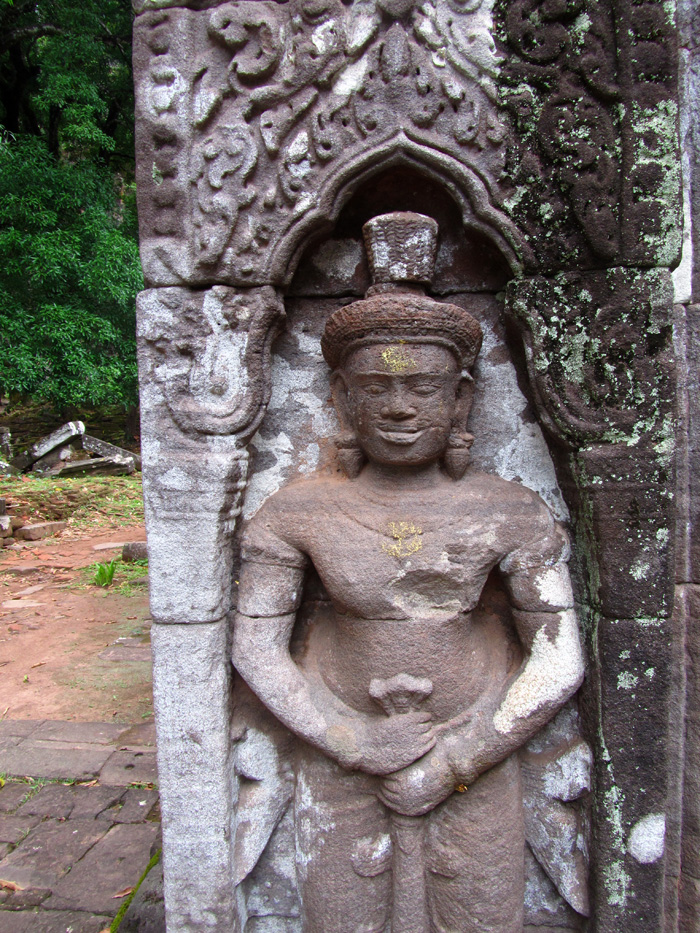
There was a mystical feeling while walking through Wat Phou, the feeling of entering the gates of an ancient force, a powerful kingdom in its time. It actually reminded me of visiting Prambanan temple in Indonesia, except this was much more peaceful and in an overall more beautiful setting.
The bottom level of the compound was set up with 2 different palace structures, a left and right building with a stone walkway through the center. Though the condition of these 2 structures was not great, the detail of the the surviving stones was incredible.
Get exclusive updates
Enter your email and I’ll send you the best travel food content.
I continued up the trail, hiking up a few flights of stone stairs and reaching the temple sanctuary on the final terrace.
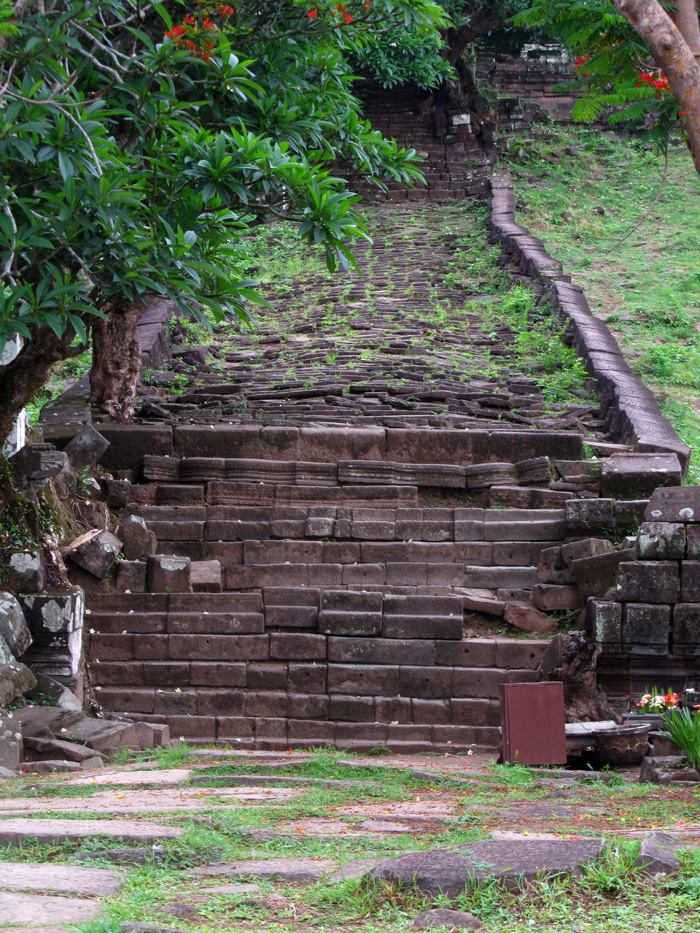
Plumeria trees were sprouting everywhere, finding ways to grow their roots over impenetrable stones to hold on for dear life.
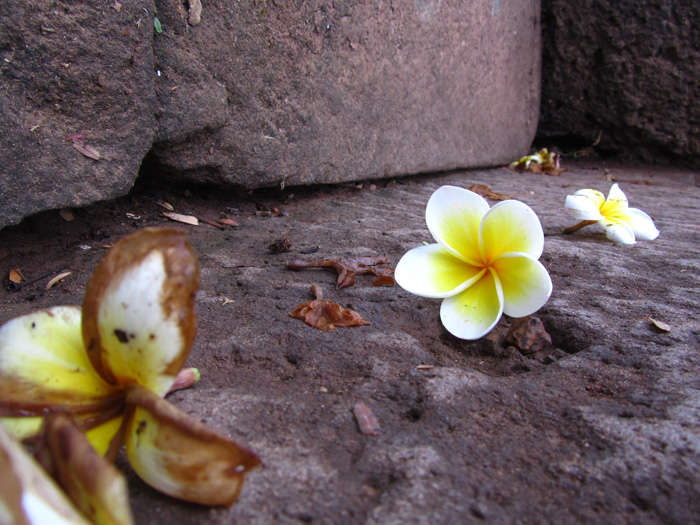
At the top of the hill was the main temple attraction of Wat Phou, a scenic building of crumbling blocks and elaborate reliefs carved deep into the stone walls. Posts and lintels were utilized in the construction of the temple.
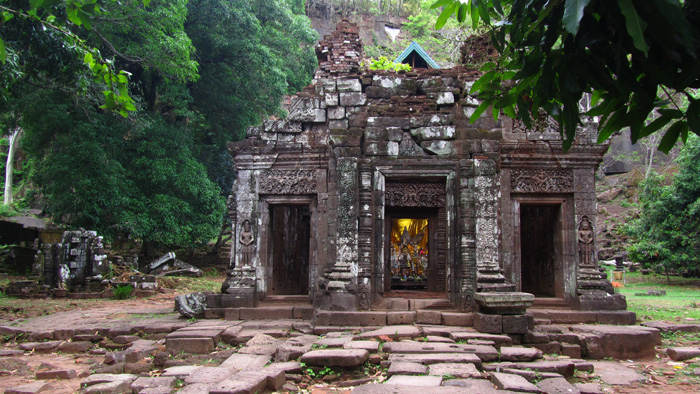
The most impressive part of visiting Wat Phou were the carvings, cut deep into the stone. This particular lintel (below), hovering over the top of a doorway, was breathtaking, a true masterpiece of intricate craftsmanship.
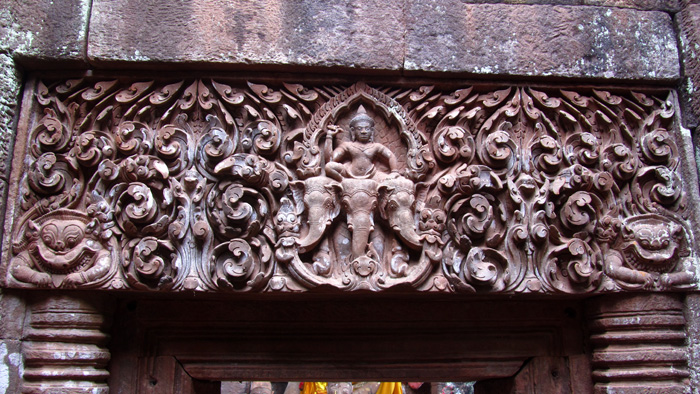
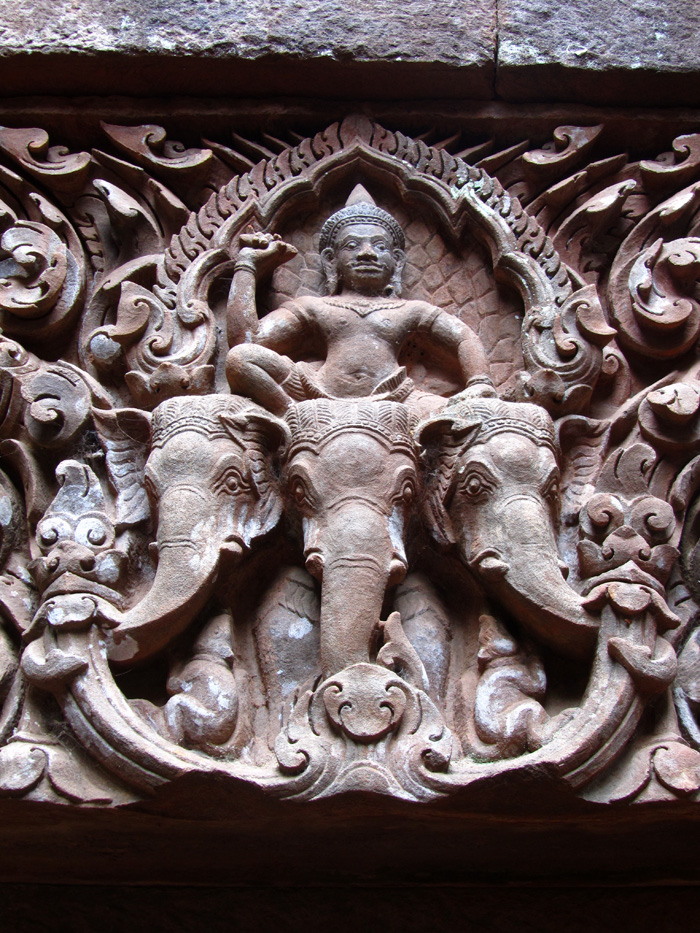
At the back of the Wat Phou temple sanctuary was an active shrine.
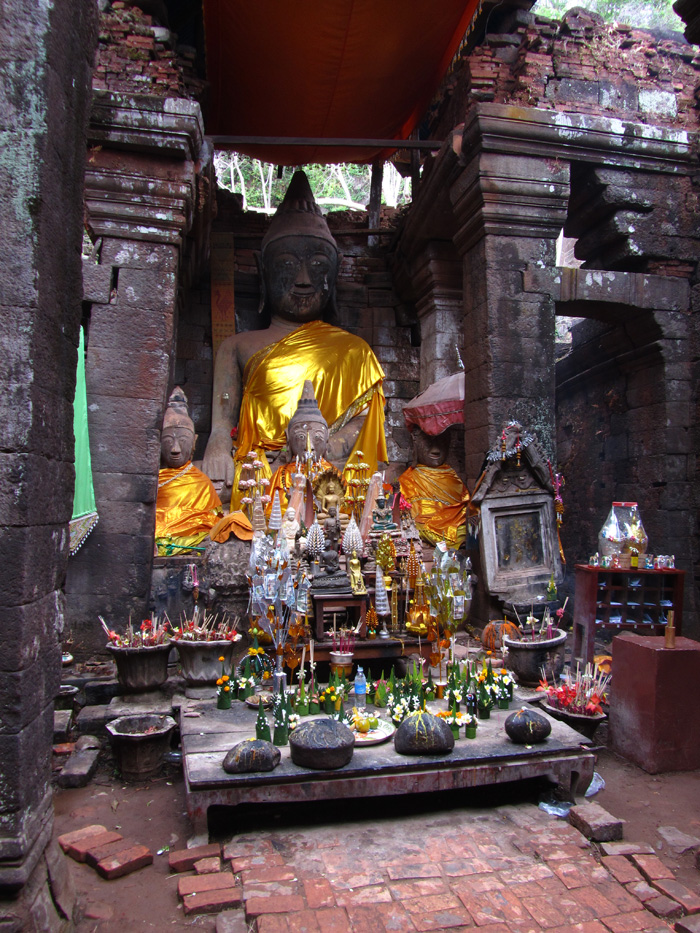
Surrounding the sanctuary temple on the top level terrace of Wat Phou, was a natural scatter of giant boulders with a variety of statues carved straight into the walls of the rock.
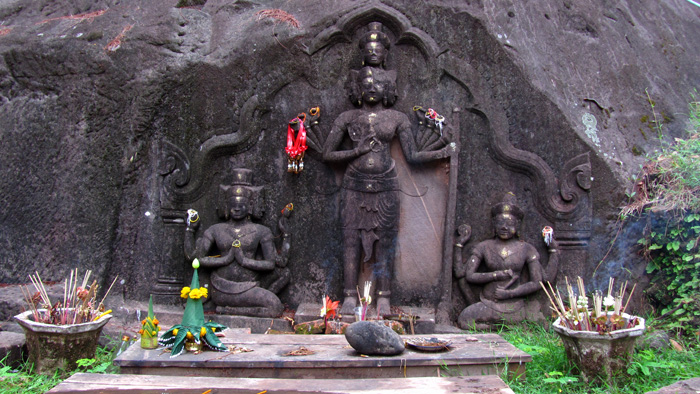
Mango trees were in abundance around the entire Wat Phou compound; I literally sat in the stillness, listening as mangoes would naturally fall to the ground and then swoop in like a vulture and scoop them up for a treat.
They were small but packed full of vibrant organic mango-ness!
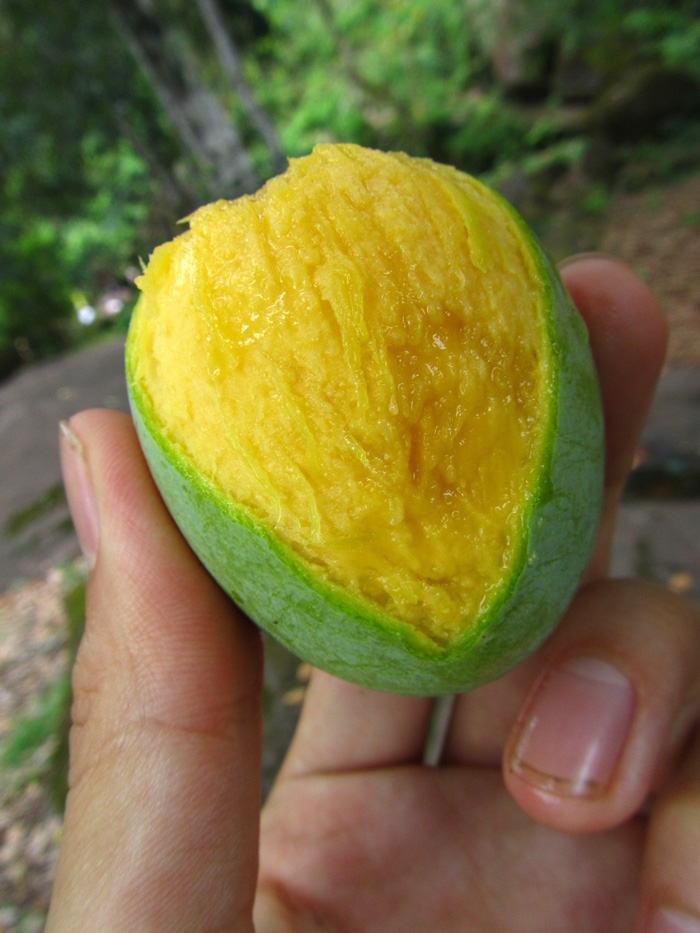
A few hours later, a number of tour groups did arrive, but not near the tourism potential.
One of the undeniable reasons Wat Phou was so beautiful was due to the lack of others enjoying the sight, making it quiet and naturally serene.
Wat Phou is a tourist attraction where it’s still possible to sit in silence and enjoy the ancient wonder in peace.

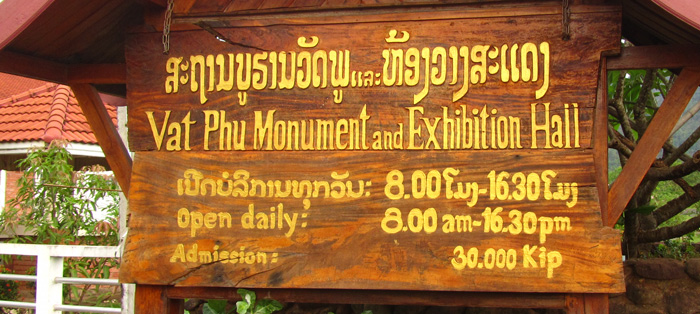
Wat Phou Entrance Information
Entrance cost: 30,000 kip per person
Open Hours: 8 am – 4:30 pm
How long do you need to see Wat Phou? I was there for about 4 hours, but anywhere from 2 – 6 hours should suffice.
For more information on visiting Champasak, be sure to click here.
Get exclusive updates
Enter your email and I'll send you the best travel food content.


